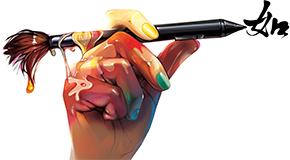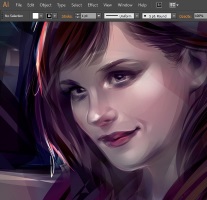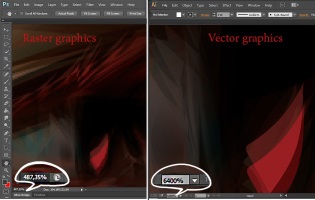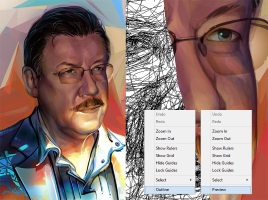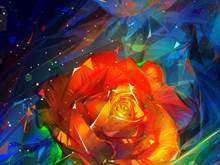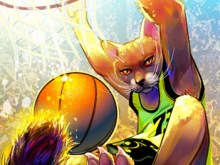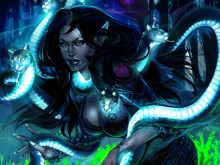Technique
What is vector graphics?
In traditional drawing techniques, the image has a fixed size – the canvas, a sheet, or a predetermined number of pixels. Vector graphics, in contrast, don’t have a “size” as such. Vector drawings can be arbitrarily scaled, increased by tens of meters if required. Lines and colors will stay clean and clear.
Raster graphics programs work with screen dots (pixels), so for example drawings created in Photoshop. These points do not know what kind of object they represent or are part of – circles, lines, rectangles. The computer stores the color of each point, and the artists composes those points to create the image. The main disadvantage of raster images is, that they cannot be magnified for further details. Since the image is composed of pixels, zooming in just causes the dots to become larger, which visually distorts the image. This effect is called pixelation. Another drawback of raster images is, that they are more heavy on system resources (RAM and disk space) then vector images.
Vector graphics programs store information about the objects that make up the image in the form of graphics primitives: straight lines, arcs, circles, rectangles, etc. This leads to the great advantage of vector images in their ability to transform without distortion, as well as to smaller file sizes.
he main use of conventional vector graphic applications is the creation of computer graphics, advertising and typography. I use Adobe Illustrator to create vector illustrations and images.
